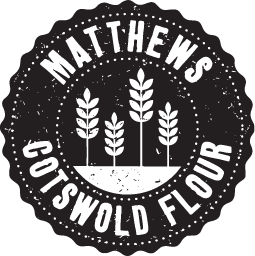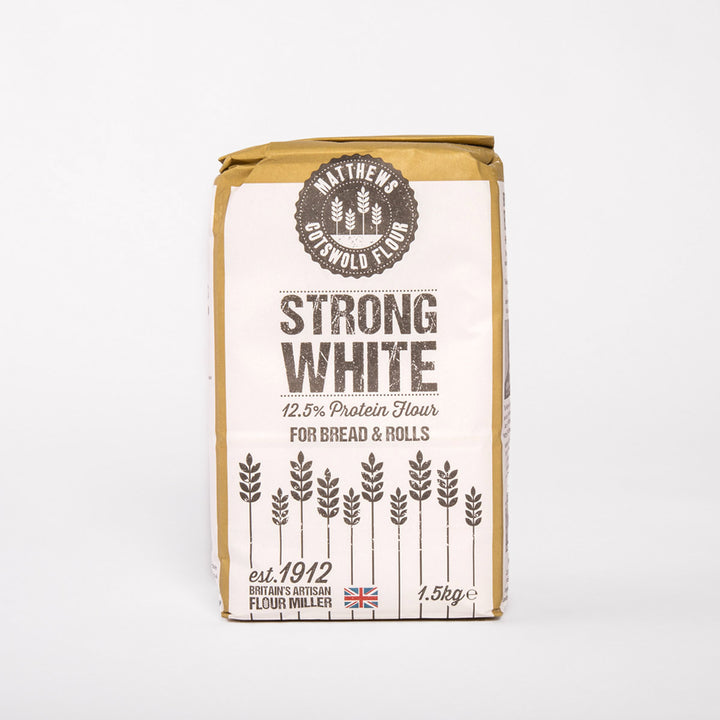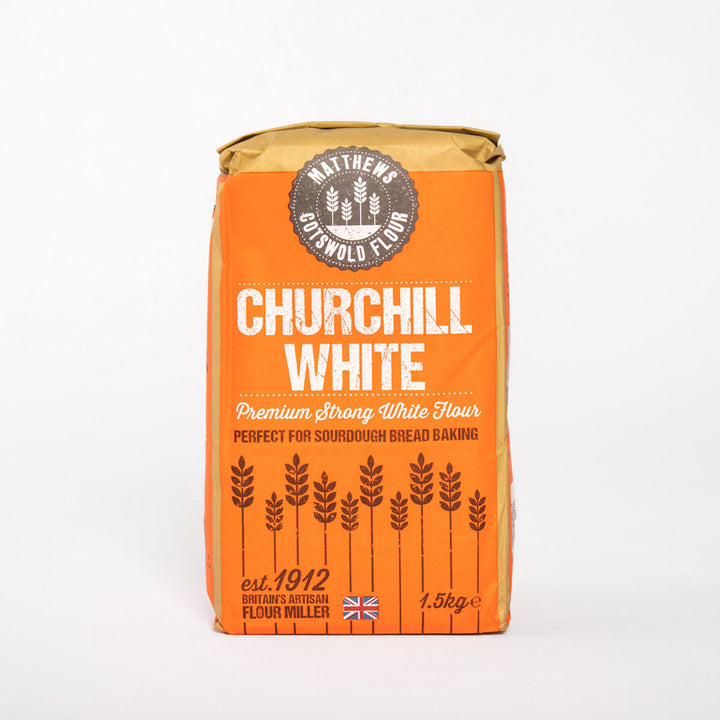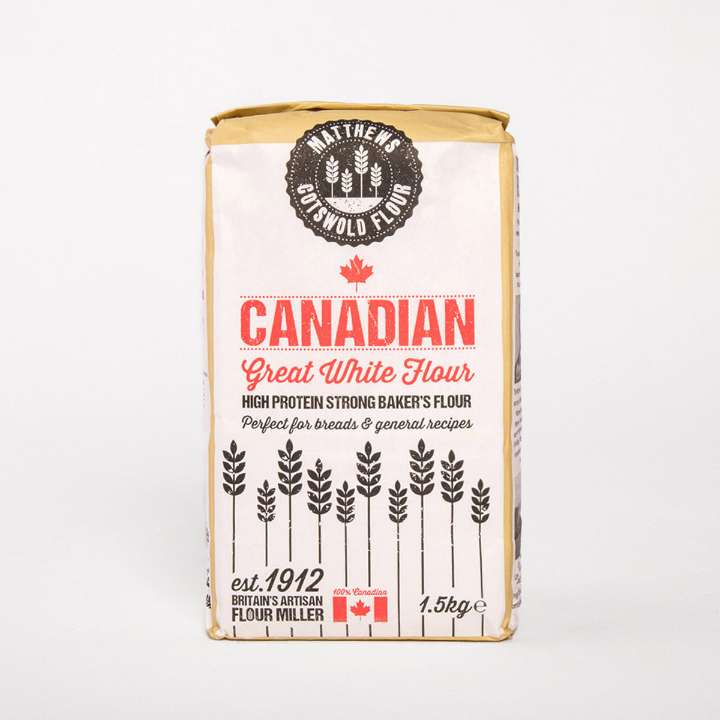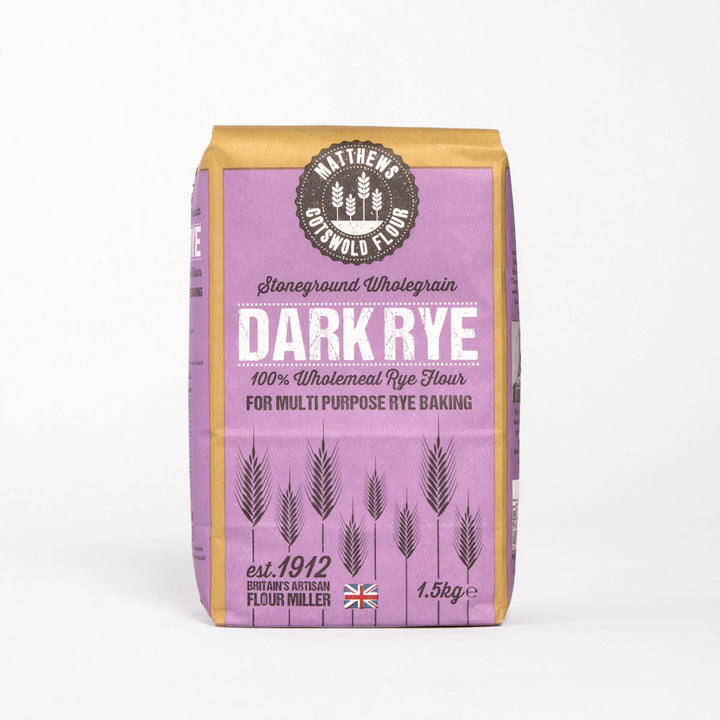Elaine Boddy's Sourdough Master Recipe
Welcome to my master recipe. This is the recipe that I use every week to make sourdough loaves for my household. The key to my process is simplicity, and not having to plan your day around the dough, but being able to fit making sourdough into your home and family life.
This recipe makes my standard sized loaf, using my Foodbod Sourdough master recipe process. here I am using strong white bread flour, other flours can be used, but if this is your first experience making sourdough, I would recommend using this flour for now. I will add notes at the end about using other flours.
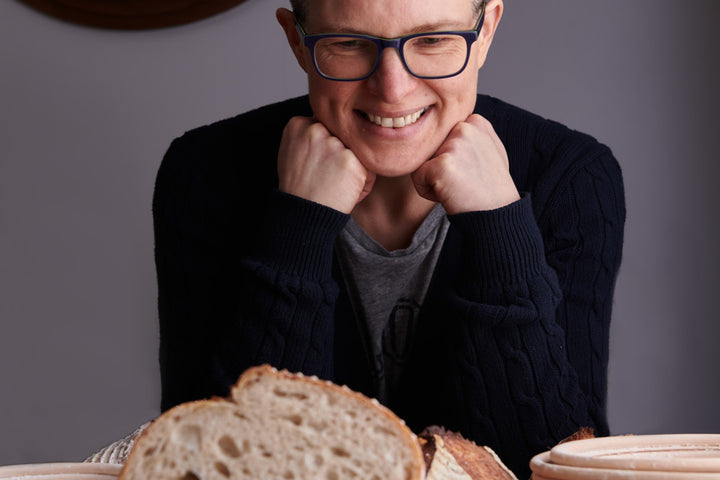
Our Sourdough Guru
Elaine Boddy is the author of three fantastic Sourdough recipe books, prolific blogger, celebrated speaker and Foodbod podcast presenter. Elaine has worked with Cotswold Flours for years, but has only recently joined us as our new Sourdough Brand Ambassador. Find out more about Elaine now.
Wonderfully Slow Process
Sourdough making is a wonderfully slow process; whereas using commercial dried yeast to make bread can produce a loaf within a couple of hours, the sourdough process is longer as starters are not developed for speed, and this is why it tastes so good, as it develops flavour during that time, but also why it’s such a great healthy option as the long proving time renders sourdough the healthiest form of bread there is. So from the point of feeding your starter to producing your loaf can encompass up to 24 hours, the actual hands on time is less than 30 minutes.
The recipe below is based on using my standard timetable, there are other timetables and guides for creating your own timetable in my book, The Sourdough Whisperer. I have included this list of the equipment that I use and recommend for making sourdough, to enable you to get the best possible result with my recipe.
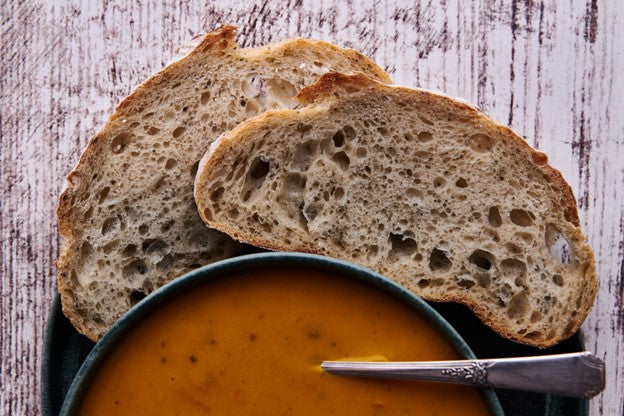
Sourdough Master Ingredients
- 50g active starter
- 350g water (I use tap water, or see notes in the starter section)
- 500g strong white bread flour
- 7g salt, or to taste
*Makes 1 standard loaf*
You Will Also Need:
- Your starter, fed and ready to go
- Good quality strong white bread flour - I recommend using Churchills White Flour or
our Strong White Bread Flour - Digital scales
- Mixing bowl, ideally 23cm diameter and 9cm deep
- Bowl scraper
- Shower cap, or bowl cover of your choice
- Banneton, 21.5cm diameter/500-750g brotform banneton prepared with rice flour
- Parchment paper - for best results use good quality parchment paper, not waxed or greaseproof paper
- Lame or razor blade
- Enamel roaster pan, 26cm diameter, or other baking pan with a lid.

Master Sourdough Recipe Method
Step 1:
I always begin making my dough between 4-5pm, this is my standard timetable, but as I’ve stated above, it can be manipulated for your household. At this time, mix all of the ingredients together in your bowl to make a rough dough, with no dry flour showing. Cover the bowl with a shower cap or cover, and leave it for an hour or so on the kitchen counter.
*Return the rest of your starter to the fridge until you need it again, with the lid firmly fitted.
Step 2:
After an hour or so, perform the first set of pulls and folds on the dough to build up its structure. To do this, pick up a small handful of dough from one side of the bowl, using your thumb and two forefingers to grab a portion, lift it, stretch it and fold it over the rest of the dough to the other side of the bowl, turn the bowl a few degrees and repeat the process, lift and fold, turn the bowl, lift and fold, turn the bowl, and continue until the dough comes together into a smoothish ball. Then stop.
Cover the bowl again and leave it out on the kitchen counter. You can now leave the bowl again for an hour, or half an hour, whatever works for you.
Step 3:
Over the next few hours, at intervals that suit you, perform 3 more sets of the lifting and folding action, just enough to bring the dough into a ball; this is the dough telling you when it is time to stop. After each set, cover the bowl and leave it on the counter doing the final set before going to bed.
Step 4:
Leave the covered bowl on the counter overnight to prove. I typically let my dough prove, untouched, for 8 to 10 hours at temperatures of 18-20C. If it is colder where you are it may take longer; if it’s warmer, you will need to make amendments to the dough at the start of the process. See below.
Step 5:
Next morning you should have a bowl full of grown dough, look for it to double in size before moving to the next stage, or if you are using a bowl the same size and make as mine, allow your dough to grow and fill the bowl so that the surface is an inch below the edge.
To place the dough into the banneton, do a series of lifts and folds on the dough and bring it into a firm ball again, then lift it into your banneton, placing it smooth side down. At this point be from with the dough, too often people are too gentle with it thinking it will ‘harm’ the dough. It won’t. You need to be firm and pull it into a nice tight ball. The dough will be full of power and resistance and wouldn’t let you squash it if you tried so don’t be too careful with it. This is what will give your loaf shape.
Cover the banneton with the same cover that you previously used for the dough, and place it in the fridge for a minimum of 3 hours, and up to a maximum of 24, to allow the dough to firm up and develop flavour.
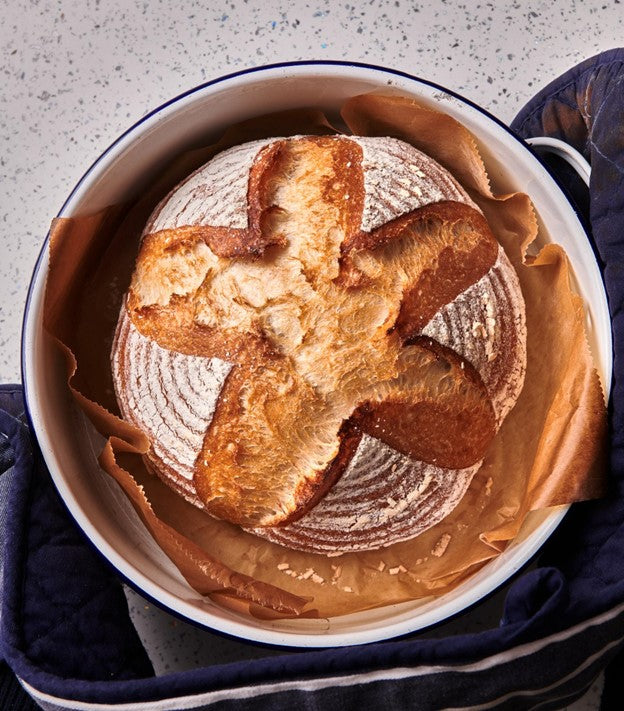


Master Recipe Method Continued
Step 6:
When you are ready to bake, you have two choices: to preheat the oven or bake from a cold start. I bake everything from a cold start, I never preheat the oven, you don’t need to either.
If you choose to preheat the oven, preheat it to 220°C fan assisted or 240C non fan. Have an enamel roaster or pan of your choice ready, plus good quality parchment paper.
Step 7:
Remove the cover from the banneton, place your parchment paper over the top of it, place the pan upside down over the top of them both. With one hand under the banneton and one hand on top of the pan, turn it all over together to turn the dough out and into the pan.
Step 8:
With a lame or a clean razor blade, score the dome of the dough cleanly and firmly, at a depth of 0.5 to 1.0 cm. Don’t be scared to score deeply, the dough needs this to encourage it to grow as it bakes.
Step 9:
Bake. If you preheated the oven, bake for 50 minutes, keeping the lid on for the entire time. If you are baking from a cold start, place the pan in the cold oven, turn the temperature to 220°C fab or 240C non fan and bake for a total of 55 minutes from the time that you placed the pan in the cold oven, with the lid on the entire time.
After 50 to 55 minutes, remove from the oven. Open the lid to check the loaf, if it’s looking pale, place it back in the hot oven, minus the lid, for 5 to 10 minutes to brown the loaf to the colour of your choice.
Once the loaf is golden brown, carefully remove it from the pan, remove the parchment paper from the bottom, and place the loaf on a wire rack.
Step 10:
Leave the loaf on its rack to cool completely. Whichever route you take to bake your loaf, once it is cooling, wait at least 1 hour before you slice into it. If you cut into the loaf too soon, it will still be cooking, plus steam will fill all those carefully crafted holes and make the bread gummy; if you can wait a few hours, it really is worth it.
Bonus Step:
Serve, slather with butter, and enjoy!
Sourdough Starters
Feel like you've skipped a step? Maybe you have... If you need to know how to make the perfect Sourdough Starter, you can download our free Sourdough Starter Journal and get going with your starter with the link below.

Sourdough Starter Favourites

Shop Sourdough Flours
Matthews Cotswold Flour has the largest range of specialist flours in the UK, so you'll always be able to find what you need to make amazing sourdough every time! Checkout Elaine's recommendations for great sourdough with the link below!
